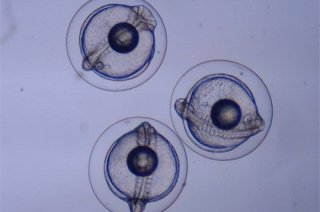
Background
Introduction
Eels have a complex life-cycle. As larva they drift on the oceanic currents to brackish estuaries and freshwater river systems. After a long growth phase they migrate back to the spawning grounds to reproduce and die afterwards. This migration pattern is characteristic for all 16 species of the Anguilla genus such as the European eel A. anguilla that migrates 6,000 km to the Sargasso Sea, and the Japanese eel A. japonica that migrates 4,000 km to the Mariana Ridge. Eel is highly appreciated as consumption fish around the globe and market demand is high e.g. for smoked eels in North-West Europe, for Kabayaki in Japan. Eel fisheries and aquaculture answer to this need. As fatty migrant, eel is among the fish with highest levels of healthy omega-3 fatty acids.
The problem
World-wide, eel populations have decreased strongly in numbers since the 1970s. Despite management measures and other protective efforts, the European eel is on the IUCN red list as ‘critically endangered’. The existing eel farms still depend on the catches of glass eels in nature which are then raised to market size. Only a restricted number of glass eels is available for aquaculture and societal concern exists about the lack of sustainability.
The solution
Successful reproduction in captivity could enable to close the production cycle and secure the supply of glass eels to aquaculture. This way, assisted reproduction could contribute to the sustainability of both eel aquaculture as well as management of the natural populations.
Current knowledge
- Japanese researchers have closed the life cycle of Japanese eels A. japonica in captivity. Still, they experience problems with rearing the larvae and glass eels, and bringing levels to commercial production.
- European researchers are able to produce larvae of European eel A. anguilla but larval growth, survival and exogenous feeding are still major challenges.
- New Zealand researchers produced larvae of A. australis and A. dieffenbachii and American researchers of A. rostrata but have not been able yet to feed the larvae.
Required knowledge
Current research initiatives are either of national or commercial nature. This creates a spotty distribution of independent activities by small research groups with large overlap. With still the large gap to commercial production, a high urgency exists to share experience (expertise, tools and people) to close this gap. Both on European level with groups working on the reproduction of European eel, but also internationally with the incorporation of Japanese research groups in particular. The former EU projects EELREP and PROEEL have proved the added value of combining forces. These collaborative projects, sharing background knowledge and providing valuable foreground knowledge, have defined proof of concept for this approach to work.


